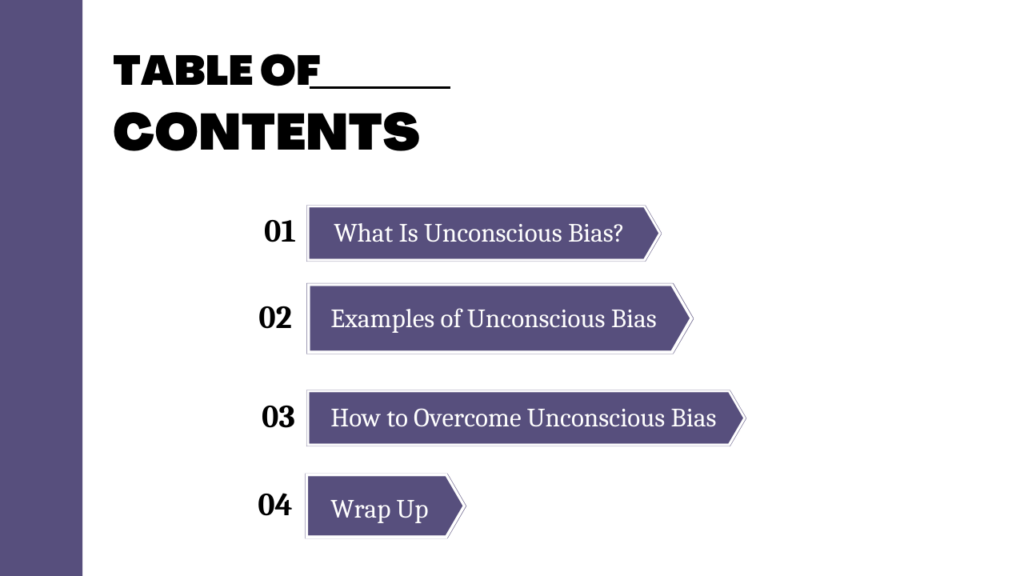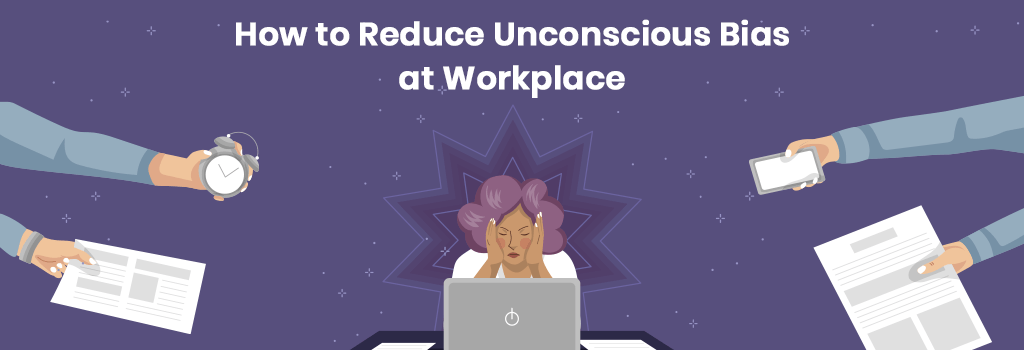Unconscious bias is a type of prejudice that we often have without knowing it. It can influence the decisions that we make in the workplace and may result in discrimination lawsuits.
It’s important to know what types of unconscious biases are common in the workplace and how to avoid them. By reducing bias, you can help create a more inclusive work environment and improve employee retention.

What Is Unconscious Bias?
Unconscious bias is a form of prejudice that we have about others without being aware of it. It can manifest in many ways, including judging people on their appearances or based on their previous experiences.
Gender bias, for example, is a type of unconscious bias that favors men over women. This can affect recruitment practices, hiring decisions, and other relationships in the workplace.
Age bias is another form of unconscious bias that occurs when we make judgments about individuals solely based on their age. This can be a problem during the job interview process, especially if you’re trying to hire people from certain groups who haven’t had the opportunity to work in a specific industry before.
These biases can also lead to discrimination, harassment, and other negative effects. To combat these, HR leaders should consider providing awareness training for their employees. This will help them recognize and prevent bias from affecting their decision-making processes, hiring, and promotions.
Examples of Unconscious Bias
Unconscious bias at work often occurs unnoticed because it is a product of our brain’s mental shortcuts. It can also lead to harmful behaviors such as microaggressions.
A common example of unconscious bias is age discrimination, based on the belief that older employees are less qualified than younger employees for certain jobs or positions. This is especially true for positions that require knowledge or skills that someone with years of experience can only master.
Another common form of bias is conformity bias, which is the tendency to accept or agree with a particular group’s opinion and behaviors. This can occur in team meetings or other social gatherings where members of the same group are influencing each other’s opinions and decision-making.
Another form of unconscious bias is confirmation bias, which is the tendency to search for information that backs up our preconceived opinions and values. This can result in ignoring or overlooking information that is contrary to our own beliefs and values.
How to Overcome Unconscious Bias
Unconscious bias in the workplace is a serious issue that can have a big impact on the company. It can affect team dynamics, leadership styles, and diversity efforts.
One way to overcome unconscious bias is through regular participation in diversity and inclusion training. This training should teach participants how to identify and counter these biases, as well as explain structural dynamics in our society that perpetuate them.
It is also important to choose trainers who are highly qualified in diversity, social psychology, and attitude formation. They should be able to deliver this content in a non-threatening, inclusive manner.
Ensure that every employee understands the importance of eliminating unconscious bias at all levels of your organization. This can be done by tracking each individual, providing them with clear criteria, and making sure that they follow the behaviors outlined in your initiative.
Wrap Up
Addressing unconscious bias in the workplace is crucial for creating a fair and inclusive environment for all employees. It requires a conscious effort from both employers and employees to recognize and overcome these biases through education, training, and ongoing self-reflection.
By taking proactive steps to eliminate unconscious bias, companies can create a more diverse and inclusive workplace, leading to increased employee engagement, productivity, and overall success.
It’s important to remember that this is an ongoing process that requires continuous effort and commitment from everyone involved. Together, we can build a workplace culture that values and respects the contributions of all employees, regardless of their background or identity.

